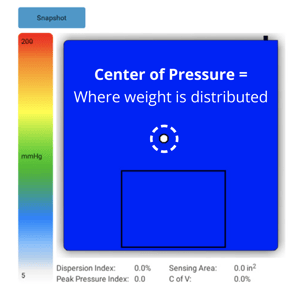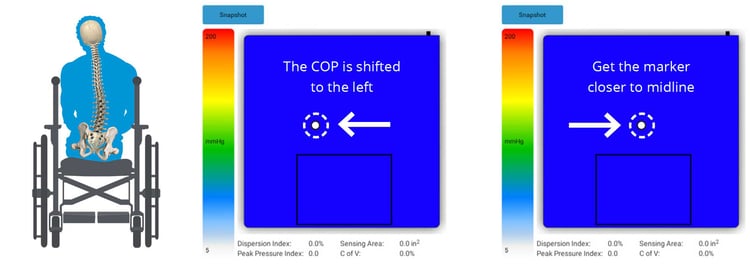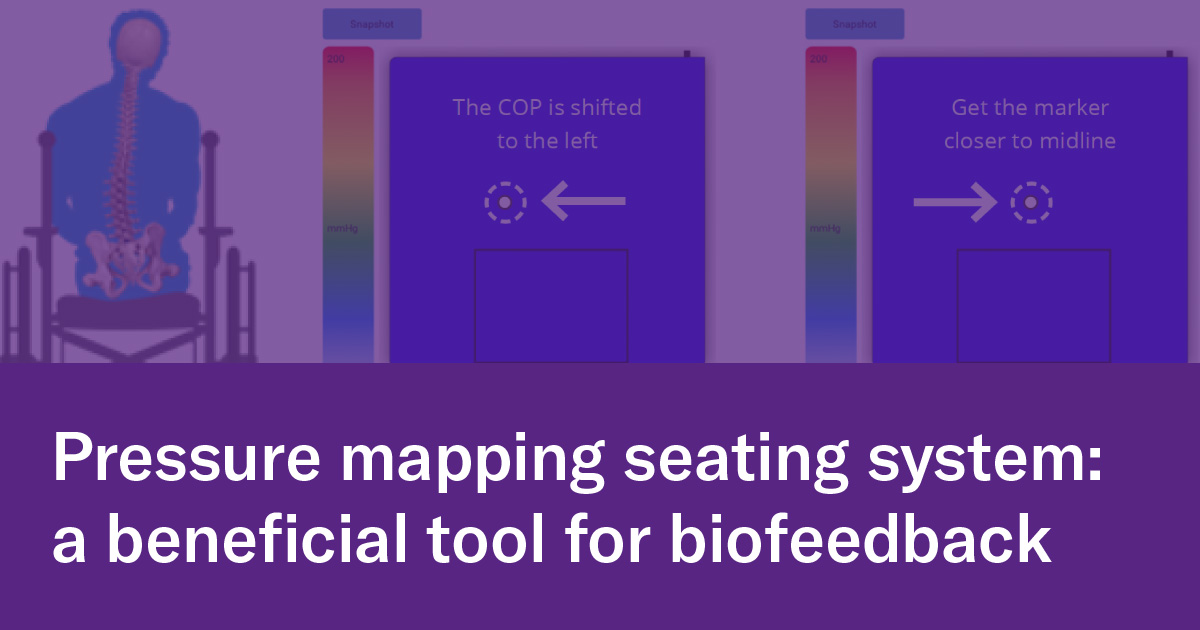This is part 4 of a series focusing on pressure mapping and pressure mapping systems. See part 1, part 2, part 3, part 4, and part 5.
Probably one of the most underused methods of using a pressure mapping system is its ability to be a biofeedback tool for neuromuscular reeducation. It can be used:
- to regain sitting balance
- to use as a teaching tool for pressure relieving techniques
Sitting Balance Retraining:
Impaired sitting balance after brain injury, such as a stroke, or after a medical decline can compromise how a client can perform daily tasks or sit well in a wheelchair system. Many times, it is difficult for the client to “see” how off balance they may be. Using the screen of the pressure mapping system (whether it be a phone, tablet, or computer screen) the client is provided visual cues as to their position in space as well as what movement is necessary to regaining balance back to midline.
Most pressure mapping systems have a function called “center of pressure (COP)”, in this picture displayed as a circle on the screen:

The sensor mat can be placed directly on a mat table, under the client during balance interventions with their therapist. The client can use the visual COP mark on the screen to learn how each movement affects their position, while working toward finding a balanced posture in the middle. By taking snapshots, the therapist can document progress toward midline sitting.

Teach Pressure Relieving Techniques:
Secondly, it is a great tool to use when teaching pressure relieving techniques. Again, through the screen, we can link the technique being taught and how far in that movement the client and or caregiver must go, to visibly see the high-risk peak pressure change color from bright red to light blue. The client can repeat the technique multiple times, seeing the same result, reinforcing the effectiveness of the strategy that you are teaching. This use of pressure mapping emphasizes:
- how effective their pressure relieving techniques are in order to allow the return of blood flow to problem areas.
- how far they need to lean, lift, or tilt to get the desired result. This ensures their pressure relief attempts are effective.
- the desired recline or tilt position that is needed to redistribute pressure when training family and care team members.

If the consumer has a wheelchair with tilt, recline, or power standing functions, consider using pressure mapping to demonstrate the pressure reducing effectiveness when these functions are used. Often, once the client visually sees the pressure changes, and they learn more about why pressure injuries occur, they are often more inclined to follow through with the strategies on their own.


 Ana Endsjo, MOTR/L, CLT
Ana Endsjo, MOTR/L, CLT
National Education Manager - Long Term Care Division
Ana Endsjo has worked as an occupational therapist since 2001 in a variety of treatment settings. She has mainly worked with the geriatric population, dedicated to the betterment of the treatment of the elderly in long term care centers. Her focus has been on seating and positioning and contracture management of the nursing home resident. With this experience, her hope is to guide other therapists, rehab directors, nurses, and administrators through educational guides, blogs, webinars, and live courses in her role as National Education Manager - Long Term
